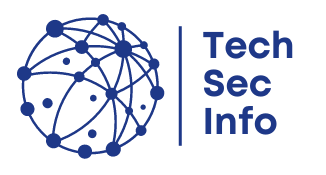View CSAF
1. EXECUTIVE SUMMARY
- CVSS v4 7.3
- ATTENTION: Exploitable remotely/Low attack complexity
- Vendor: Johnson Controls
- Equipment: Software House C●CURE 9000
- Vulnerability: Use of Weak Credentials
2. RISK EVALUATION
Successful exploitations of this vulnerability could allow an attacker to gain administrative access.
3. TECHNICAL DETAILS
3.1 AFFECTED PRODUCTS
The following Johnson Controls products are affected:
- Software House C●CURE 9000: Version 2.80 and prior
3.2 Vulnerability Overview
3.2.1 USE OF WEAK CREDENTIALS CWE-1391
Under certain circumstances the Software House C●CURE 9000 installer will utilize weak credentials.
CVE-2024-32759 has been assigned to this vulnerability. A CVSS v3.1 base score of 8.8 has been calculated; the CVSS vector string is (AV:N/AC:L/PR:N/UI:R/S:U/C:H/I:H/A:H).
A CVSS v4 score has also been calculated for CVE-2024-32759. A base score of 7.7 has been calculated; the CVSS vector string is (CVSS:4.0/AV:N/AC:L/AT:P/PR:L/UI:N/VC:H/VI:H/VA:H/SC:N/SI:N/SA:N).
3.3 BACKGROUND
- CRITICAL INFRASTRUCTURE SECTORS: Critical Manufacturing, Commercial Facilities, Government Facilities, Transportation Systems, Energy
- COUNTRIES/AREAS DEPLOYED: Worldwide
- COMPANY HEADQUARTERS LOCATION: Ireland
3.4 RESEARCHER
Reid Wightman of Dragos reported this vulnerability to Johnson Controls, Inc.
4. MITIGATIONS
Johnson Controls Inc. recommends the following:
- Update Software House C●CURE 9000 to at least version 2.90
- For more detailed mitigation instructions, please see Johnson Controls Product Security Advisory JCI-PSA-2024-12 v1 at the following location: https://www.johnsoncontrols.com/cyber-solutions/security-advisories
- Aligning with CISA recommendations, Johnson Controls recommends taking steps to minimize risks to all building automation systems.
CISA recommends users take defensive measures to minimize the risk of exploitation of this vulnerability, such as:
- Minimize network exposure for all control system devices and/or systems, ensuring they are not accessible from the internet.
- Locate control system networks and remote devices behind firewalls and isolating them from business networks.
- When remote access is required, use more secure methods, such as Virtual Private Networks (VPNs), recognizing VPNs may have vulnerabilities and should be updated to the most current version available. Also recognize VPN is only as secure as the connected devices.
CISA reminds organizations to perform proper impact analysis and risk assessment prior to deploying defensive measures.
CISA also provides a section for control systems security recommended practices on the ICS webpage on cisa.gov/ics. Several CISA products detailing cyber defense best practices are available for reading and download, including Improving Industrial Control Systems Cybersecurity with Defense-in-Depth Strategies.
CISA encourages organizations to implement recommended cybersecurity strategies for proactive defense of ICS assets.
Additional mitigation guidance and recommended practices are publicly available on the ICS webpage at cisa.gov/ics in the technical information paper, ICS-TIP-12-146-01B–Targeted Cyber Intrusion Detection and Mitigation Strategies.
Organizations observing suspected malicious activity should follow established internal procedures and report findings to CISA for tracking and correlation against other incidents.
CISA also recommends users take the following measures to protect themselves from social engineering attacks:
- Do not click web links or open attachments in unsolicited email messages.
- Refer to Recognizing and Avoiding Email Scams for more information on avoiding email scams.
- Refer to Avoiding Social Engineering and Phishing Attacks for more information on social engineering attacks.
No known public exploitation specifically targeting this vulnerability has been reported to CISA at this time.
5. UPDATE HISTORY
- July 9, 2024: Initial Publication
